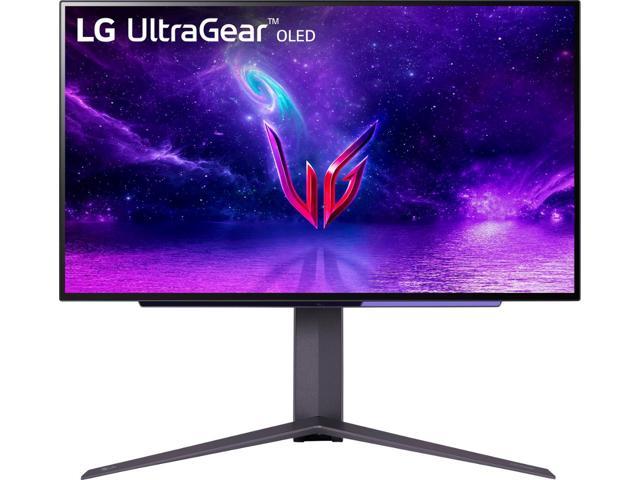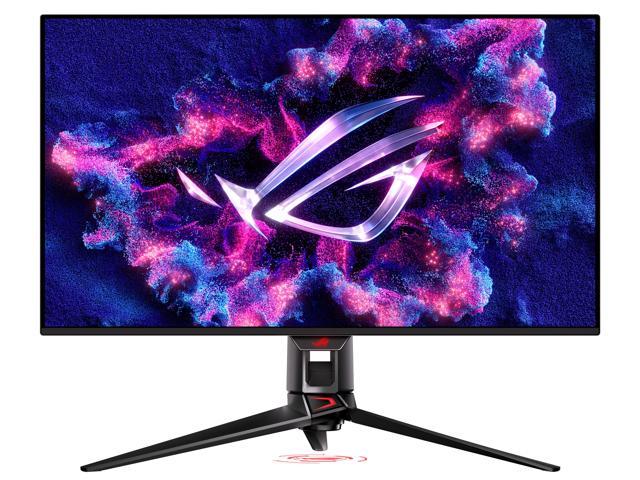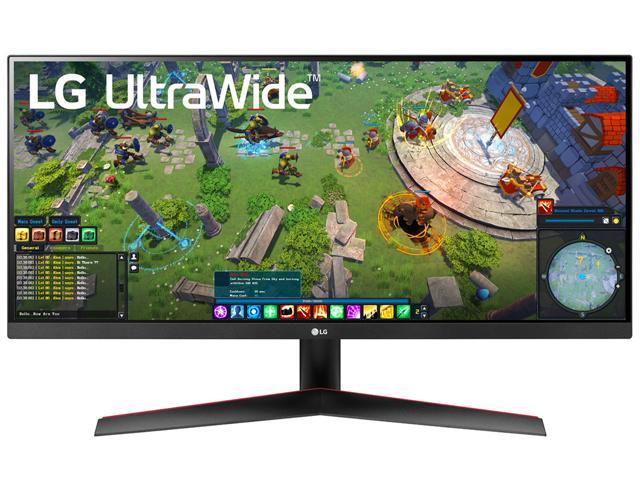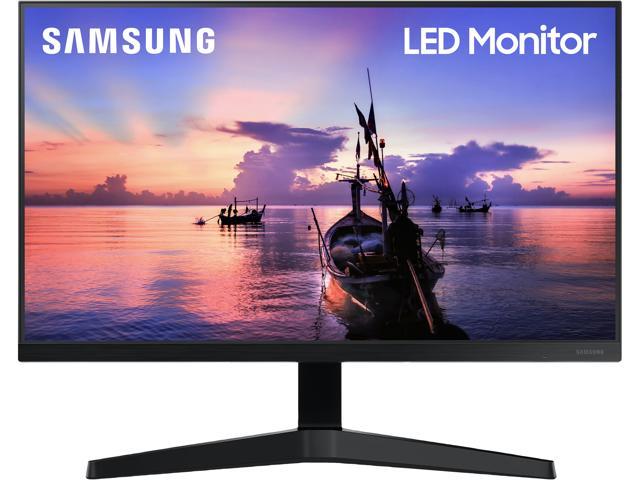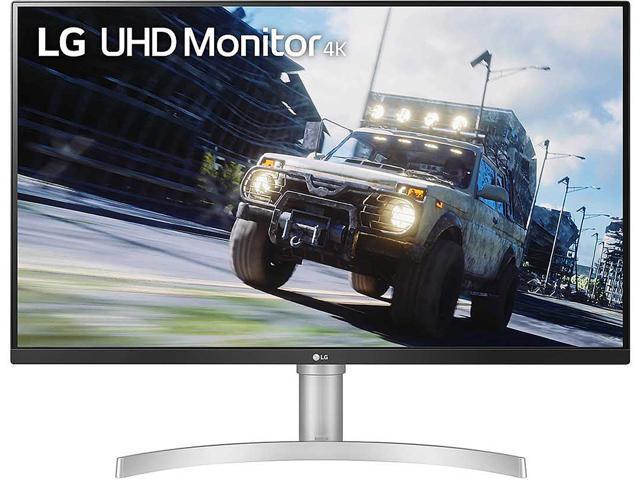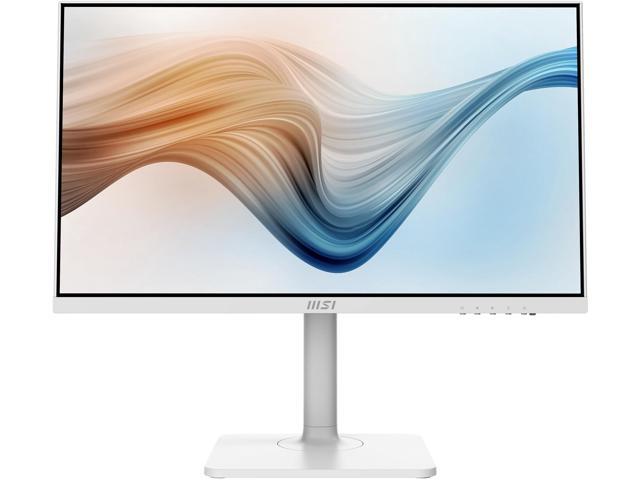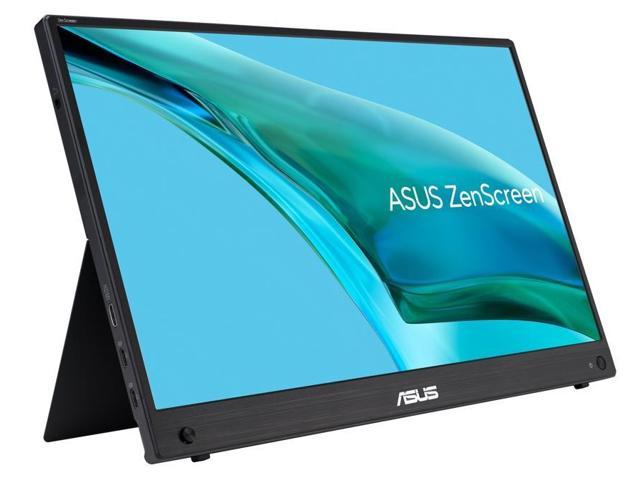- Home
- Computer Peripherals
- Monitor
Monitor
- Shop Category
- Accessories
- Refurbished
- Shopping Tools
- Screen Size
- Show More
- Resolution
- Response Time
- Aspect Ratio
- Contrast Ratio
- Usage
- Widescreen
- Built-in Speakers
- Show More
- Panel
- Show More
- Video Ports
- USB Ports
- VESA Compatibility - Mountable
- Refresh Rate
- Show More
- Brightness
- 3D Ready
- 3D Glasses Included
- Adaptive Sync Technology
- Show More
- Curved Surface Screen
- Display Colors
- Show More
- Monitor Pixel Density
- Viewing Angle
- Show More
- Stand Adjustments
- Show More
- Cabinet Color
- Show More
- HDCP Support
- Built-in Webcam
- D-Sub
- DVI
- Video
- HDMI
- Show More
- Thunderbolt 3
- DisplayPort
- Show More
- USB 2.0
- Show More
- USB 3.0
- Show More
- Cosmetic Condition
- VESA Certified DisplayHDR
- Brands
- Show More
- All Top Brands
- Availability
- Condition
- Price
- Show More
- Current Promotion
- Discount
- Sold by
- Useful Links
- New
Show More
- Customer Ratings
Shop Monitors
Step into the future of gaming with the ROG SWIFT OLED PG27UCDM, featuring 4th Gen ROG OLED technology for unparalleled visuals, future-proof hardware, and advanced detection capabilities that recognize when you're in front of your screen.
Experience the world’s first 5K2K OLED Gaming Monitor, delivering immersive and captivating gameplay with a 5K2K (5120x2160) resolution, 125 PPI, and Dual-Mode with selectable 8 options, the 21:9 UltraWide sweet spot, 800R curvature, and DisplayPort 2.1.
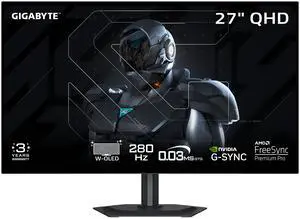
- Screen Size: 27"
- Refresh Rate: 280 Hz
- Resolution: 2560 x 1440 (2K)
- Response Time: 0.03 ms (GTG)
- Model #: MO27Q28G SA1
- Item #: N82E16824012111
- Return Policy: 15-Day Return Policy
- $599.99 –
- Free Shipping
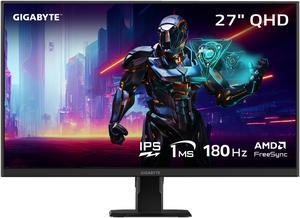
- Screen Size: 27"
- Refresh Rate: 180 Hz
- Resolution: 2560 x 1440 (2K)
- Response Time: 1ms (MPRT)
- Model #: GS27QA SA1
- Item #: N82E16824012083
- Return Policy: 15-Day Return Policy
- $249.99
- $179.99 –
- Save: 28%
- Free Shipping
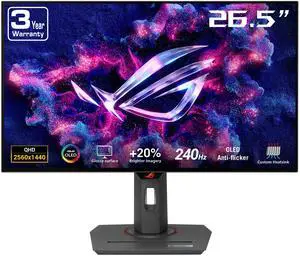
- Screen Size: 27"
- Refresh Rate: 240 Hz
- Resolution: 2560 x 1440 (2K)
- Response Time: 0.03 ms (GTG)
- Model #: XG27AQDMGZ
- Item #: N82E16824281379
- Return Policy: 15-Day Return Policy
- $524.99 –
- More options from $524.99 - $699.99
- Free Shipping
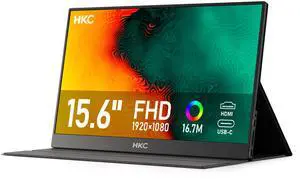
- Brand: HKC
- Cabinet Color: Space Gray / Black
- Screen Size: 15.6"
- Resolution: 1920 x 1080
- Model #: V16
- Item #: N82E16824204004
- Return Policy: 15-Day Return Policy
- $74.99 –
- Free Shipping

- Screen Size: 24" (23.8" actual screen size)
- Refresh Rate: 180 Hz
- Resolution: 1920 x 1080
- Response Time: 2ms (G to G) - Up to 0.5ms (G to G)
- Model #: UM.QX1AA.305
- Item #: N82E16824011511
- Return Policy: 15-Day Return Policy
- $129.99
- $94.99 –
- Save: 26%
- Free Shipping
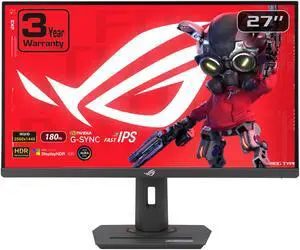
- Screen Size: 27"
- Refresh Rate: 180Hz (Above 144Hz)
- Resolution: 2560 x 1440 (2K)
- Response Time: 1 ms
- Model #: XG27ACG
- Item #: N82E16824281381
- Return Policy: 15-Day Return Policy
- $199.99 –
- Free Shipping
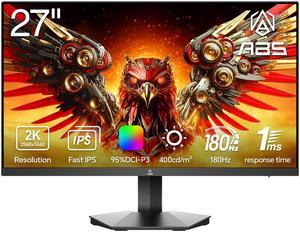
- Screen Size: 27"
- Refresh Rate: 180 Hz
- Resolution: 2560 x 1440 (2K)
- Response Time: 2ms GTG, 1ms DIC
- Model #: GQ271NE
- Item #: N82E16824942001
- Return Policy: 15-Day Return Policy
- $249.99
- $139.99 –
- Save: 44%
- Free Shipping
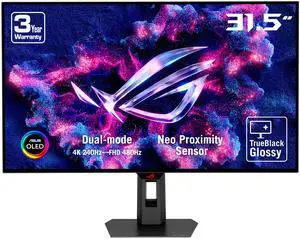
- Screen Size: 32"
- Refresh Rate: 240 Hz
- Resolution: 3840 x 2160 (4K)
- Response Time: 0.03 ms(GTG)
- Model #: XG32UCWMG
- Item #: N82E16824281378
- Return Policy: 15-Day Return Policy
- $1,099.99 –
- More options from $1,099.99 - $1,426.65
- Free Shipping
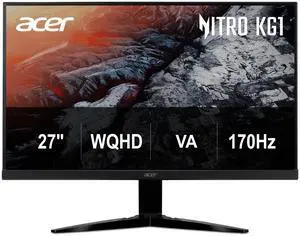
- Screen Size: 27"
- Refresh Rate: 170Hz using Display Port 144Hz using HDMI Port
- Resolution: 2560 x 1440 (2K)
- Response Time: 1 ms
- Model #: UM.HX1AA.P03
- Item #: N82E16824011452
- Return Policy: 15-Day Return Policy
- $249.99
- $149.99 –
- Save: 40%
- Free Shipping
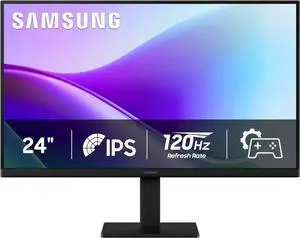
$10 promotional gift card w/ purchase, limited offer
- Resolution: 1920 x 1080
- Refresh Rate: Max 120Hz
- Monitor Pixel Density: N/A
- Display Colors: 16.7 Million
- Model #: LS24F320GANXZA
- Item #: N82E16824027380
- Return Policy: 30-Day Return Policy
- $169.99
- $109.99 –
- Save: 35%
- Free Shipping
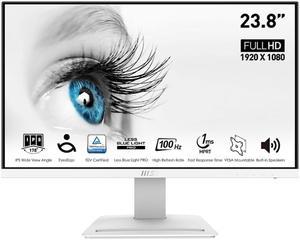
- Resolution: 1920 x 1080
- Monitor Pixel Density: 0.2745mm
- Display Colors: 16.7 Million
- Cabinet Color: Matte White
- Model #: Pro MP243XW
- Item #: N82E16824475317
- Return Policy: 15-Day Return Policy
- $102.99
- $99.03 –
- More options from $96.56 - $99.03
- Free Shipping
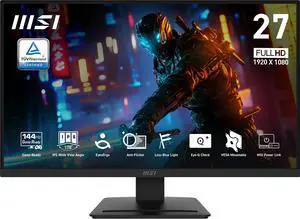
- Screen Size: 27"
- Refresh Rate: 144 Hz
- Resolution: 1920 x 1080
- Response Time: 1ms (MPRT) / 4ms (GTG)
- Model #: PRO MP273L E14
- Item #: N82E16824475500
- Return Policy: 15-Day Return Policy
- $129.99
- $104.99 –
- Save: 19%
- More options from $104.99 - $166.83
- Free Shipping
Related searches
Shop monitors on Newegg for our extensive selection featuring Flat Panel, LED, LCD, and Curved HD Monitors. Be sure to explore our monitor buying guide and browse our collection of monitor accessories to fulfill all of your display needs.
Boost system performance with Gaming Monitors: Top PC Monitors
A crucial part of every system build, a well-made computer monitor ensures that you will realize the performance output by your computer hardware. Perhaps you spent days, weeks, and months choosing the right CPU and the best graphics card to play the games at your desired resolution. However, suppose you blew your budget on all the horsepower and left none for the display. In that case, you’re not going to appreciate the intensity of all those pixels that your computer renders at incredible speeds. With PC games getting more graphically intense, you must ensure your display can keep up.
Choosing 2k or 4k Resolution – Current Standard or Premium Display Monitors
You’ve probably seen terms like HD and Full HD on the boxes of monitors and TVs, but what does that mean? As you may have guessed, HD refers to “High Definition,” a quick way to refer to a high-quality video output. So, if you see the term “Full HD” on a monitor box, that’s just a shorthand to denote its resolution, which would be 1920 by 1080, also called 1080p. The reason why it’s specified as “Full HD” is that there are also some TVs and monitors that output at 720p (high definition but not relatively as high as 1080p), which is 1280 by 720 pixels. 1080p is considered the current standard for monitors, and popular manufacturers, including Dell, Acer, Samsung, LG, BenQ, and Viewsonic, offer a variety of 1080p monitors in their product lineups.
When it comes to resolution, 4K is all the buzz right now. Game developers and graphics card manufacturers focus on making and running games at 4k resolutions, twice the horizontal and vertical resolution of 1080p. Officially labeled as 4K UHD, the full pixel resolution is 3840 by 2160. That’s why there had to be a new term to define the resolution scale because 4k is much clearer and more vibrant than 1080p. Many call it hyper-realistic because of how many pixels populate the display area. To make distinguishingbetween the two resolution types easier, 1080p is often referred to as 2k resolution.
Monitor Refresh Rates – Understanding Hertz and Ghosting
As you can imagine, the more pixels there are to display, the more critical it is that your monitor has a high refresh rate, especially when it comes to gaming. Typically, the standard has been a 120-hertz refresh rate in gaming monitors, but many feature a 144-hertz refresh rate. The quicker a monitor can refresh the display, the smoother the visual experience. This is because the refresh rate in the monitor works in tandem with a low response time (which specifies how quickly the monitor can send and receive new information) to make a seamless visual transition. Sometimes, if the response rate is not quick enough, some residual pixels can remain on the screen as the monitor tries to refresh new ones; this is called ‘ghosting.’ Although it’s standard to have a four-millisecond response time on many gaming monitors, Samsung, LG, BenQ, Viewsonic, and more all offer 2k and 4k monitors with one-millisecond response times. It is also important to ensure refresh rates are identical if you plan to sync two monitors for your display.
LCD or LED – Accurate Color Presentation versus Thin Efficiency
Regarding the internal specs, response time and refresh rate are the main factors contributing to a smooth, immersive viewing experience. Still, the monitor's physical panel type can also play into this. First, there’s the matter of how the monitor lights up: either with LCD or LED. The main difference lies in the material used to light the liquid crystals in the display. In LCD, it’s cold cathode fluorescent lamps (CCFLs); in LEDs, it’s tiny light emitting and low-energy consuming diodes. LCD is preferred in most monitors because it consumes less power and produces less harsh light, making darker colors appear more vivid. Additionally, LED monitors can be much thinner than LCD ones.
Newer LCD monitors have improved with the implementation of IPS (In-PlaneSwitching) panels. For some, it’s a matter of preference, but the IPS panels have shown their strength with accurate color reproduction, which is great for content creators who want to do photo editing or graphic design. The panel type you choose depends more on preference than anything else. Samsung is well known for championing the IPS panel in their monitors, and many people also enjoy using them for gaming.
Rethink Computer Monitor Functionality with Curved Displays and Touchscreens
For some people, it’s essential, not just the monitor specs. Having a fast, intuitive monitor that looks nice on their desk is a crucial part of a computer build designed to make a statement. Asus’ Predator X34 shows off with its 34-inch curved IPS panel that also features Nvidia’s Gsync technology, which matches the gaming framerates with the monitor’s native refresh rate to prevent screen tearing. Samsung offers a 29-inch curved monitor with a 4-millisecond response time for those who want the style without the price tag.
As touch navigation becomes more normalized due to mobile browsing, you may consider a touch monitor for maximum accessibility. Planar offers a 22-inch optical touchscreen monitor that is highly portable due to its USB connection type. Dell provides a capacitive touchscreen monitor with an IPS panel, which you can use in meetings for presentations.
Finally, another consideration is whether enough HDMI (High-Definition Multimedia Interface) ports exist. HDMI allows simultaneous digital video and audio transmission from one source to another. While HDMI ports are often standard, especially on gaming monitors, verifying that a monitor has enough HDMI compatibility for your setup before purchasing is essential.
When you’ve picked out the perfect display, don’t forget the essential accessories to go with it. For a two or three-screen setup, Ergotron, Rosewill, and SIIG offer a variety of stationary and swivel monitor mounts for both the wall and your desk. Soon, you’ll have a command center you’ll never want to leave. So, ready to get started?
FAQ: What does 2k and 4k resolution mean?
They represent shorthand descriptions of the total number of pixels displayed on the monitor. For 2k, it showcases 1920 x 1080 pixels in a 16:9 widescreen aspect ratio. For 4k, it presents 3840 by 2160 pixels in the same aspect ratio.
FAQ: What’s the difference between LCD and LED monitors?
Monitors require illumination for display visibility, and the disparity lies in their lighting mechanisms. LCDs use cold cathode fluorescent lamps (CCFLs) to illuminate the crystals, while LEDs employ small, energy-efficient diodes. LED monitors typically boast a slimmer profile and higher energy efficiency, yet advancements in panel types have enhanced the competitiveness of LCDs.
Bestselling Monitor Reviews:
“ This is a good 27" monitor at a great price. ”
ASRock 27" 100Hz (Max.) IPS Full HD FreeSync (AMD Adaptive Sync) 1920 x 1080 sRGB 99% Challenger CL27FF Monitor“ Its good enough to be a main gaming monitor ”
ASRock 25" (24.5" viewable) 100Hz (Max.) IPS FULL HD FreeSync (AMD Adaptive Sync) 1920 x 1080 sRGB 99% Challenger CL25FF Monitor“ The picture quality is amazing. ”
ASRock 27" 100Hz (Max.) IPS Full HD FreeSync (AMD Adaptive Sync) 1920 x 1080 sRGB 99% Challenger CL27FF Monitor“ It represents a significant improvement over what she was previous using and she loves it. ”
ASUS ProArt Display 27" 1440P Monitor (PA278QV) - QHD (2560 x 1440), 100% sRGB/Rec. 709 Delta E < 2, IPS, DisplayPort HDMI DVI-D Mini DP, Calman Verified, Eye Care, Tilt, Pivot, Swivel, Height Adjustable“ Great for gaming. ”
ASRock 27" 100Hz (Max.) IPS Full HD FreeSync (AMD Adaptive Sync) 1920 x 1080 sRGB 99% Challenger CL27FF Monitor“ Great monitor at a great price. ”
ASRock 27" 100Hz (Max.) IPS Full HD FreeSync (AMD Adaptive Sync) 1920 x 1080 sRGB 99% Challenger CL27FF Monitor“ Purchased this for my Daughter and she LOVES IT!! ”
ASRock 25" (24.5" viewable) 100Hz (Max.) IPS FULL HD FreeSync (AMD Adaptive Sync) 1920 x 1080 sRGB 99% Challenger CL25FF Monitor“ Great monitor for gaming! ”
ASRock 25" (24.5" viewable) 100Hz (Max.) IPS FULL HD FreeSync (AMD Adaptive Sync) 1920 x 1080 sRGB 99% Challenger CL25FF Monitor













